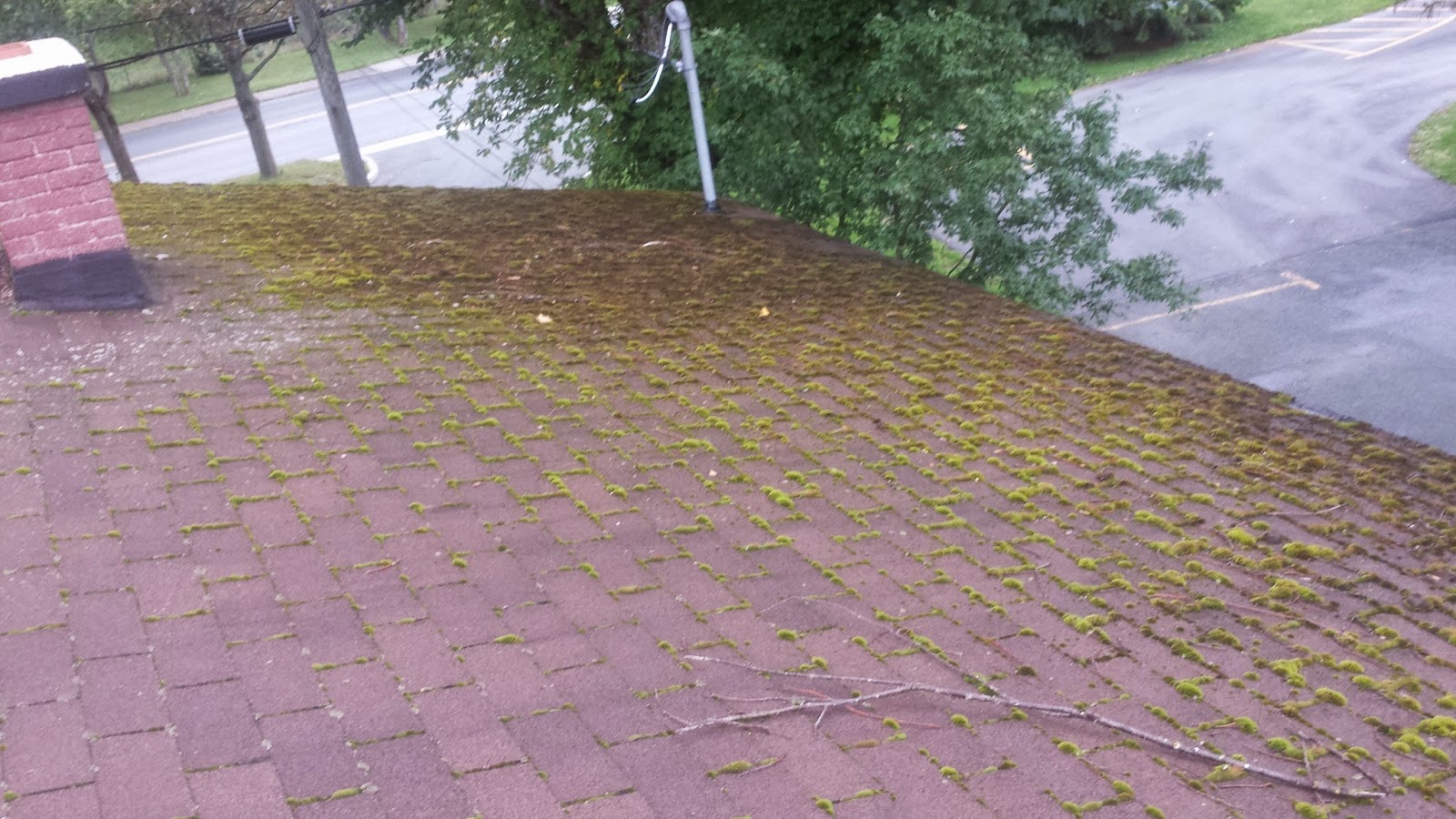It makes sense that moss follows moisture. And moisture is pervasive in an area which becomes wet and then is slow to dry. We often find moss on the shaded side or area of a roof. This includes valleys, areas shaded by trees, areas not facing the sun, low slope and so on. So one of the first symptoms that we look for as home inspectors is the tendency of water to accumulate in any area on the roof.
Of course, the presence of moss has to indicate some issue. Moss growing on the asphalt shingles of a roof is surely not what we had in mind when we built the home. Also, any vegetation, including moss tends, to hold water. Moss on the roof, holding water will increase the likelihod of damage to the shingles and water entering the attic. So we have two problems. Why is the moss there in the first place and how can we get rid of it.
Lets address the second problem first.
Removing moss
If we find moss on an asphalt shingle roof then we may be able to remove it by simply using a broom and water. There will be some risk to this since the water can work its way up under the shingles so use as little pressure as possible (i.e. do not use a pressure washer) and do not spray up under the shingles. The removal of the moss will reveal the extent of damage to the shingles and dictate next steps as to a repair.
If the moss growth is heavier then use a stiff brush along with a comnbination of water and bleach to remove it. Again, the potential for damage to the shingles is still there so be careful and as gentle as possible.
Determine the cause of the moss
This may be a little more dificult. Consider carefully why the moss covered area is wetter than other areas. A little common sense and detective work goes a long way here. Some causes may be:
- Shaded by trees/vegetation
- Water holding up in the area
- Extra water accessing this area
- Lack of ability for this area to dry
Depending on the cause you may be able to remove shading trees or vegetation, redirect water away from the area or reshape the roof so that water does not accumulate.
Regardless of the cause and remediation steps you take, it is important that the existing moss be removed. The longer it is on the roof, the more it will grow and the more water it will retain. Roof deterioriation will accelerate and problems will appear in your attic soon enough.
And of course, regular monitoring of the roof surface and regular maintenence goes a long way. Don't forget to look up!
If I can be of service to you, please feel free to contact me via email: inspector@guardianhomeinspections.ca
www.guardianhomeinspections.ca
twitter @guardianhomeins

